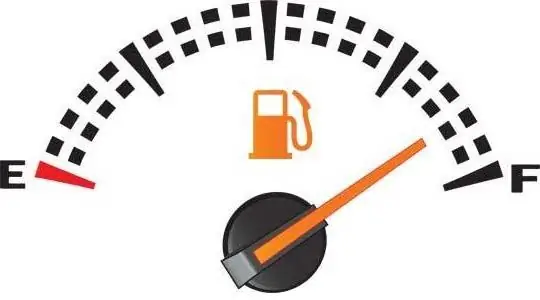2026 Author: Erin Ralphs | [email protected]. Last modified: 2025-01-22 21:14:16
Car owners are increasingly buying all-wheel drive cars. They allow you to feel confident on a country road, on a trip to the country, fishing, hunting. A drive to all 4 wheels can come in handy even in a city yard if it is heavily powdered with snow. Nissan offers the Terrano crossover, which feels great both in the village and on the gravel site on the way to your beloved lake.
Car History
In early 1980, Japanese engineers began to develop a new car on their own platform. Frame construction, a solid rear axle and a reinforced transmission became the main and integral part of the first generation Terrano.
The original plan was to use a chassis from a Navara pickup truck. However, frequent improvements in the width and location of the units led to the creation of a design from scratch. This resulted in improved driving performance, weight reduction and low susceptibility.chassis to road potholes.
Terrano first generation (1986)
The first body, numbered WD21, was introduced in the late summer of 1986. At the time of the start of sales, all configurations were 3-door with a powerful spar frame that was not afraid of corrosion and torsion loads.
The five-door variation was introduced in 1990 in the United States of America. Unusual was the fact of the same length of both versions - 4365 millimeters. All versions were equipped with all-wheel drive with a powerful transfer case and a continuous rear axle. The front axle was connected using levers installed in the cabin. The clutches built into the hubs were delayed and often required a slight rollback of the vehicle to fully engage.

Part-time all-wheel drive is only permitted on slippery or unpaved roads. Terrano-1 was no exception to this rule, it was possible to move along the highway only with rear driving wheels.
Suspension SUV has long strokes and good "swallows" pits and potholes on the roads. The downside of this softness was the roll when cornering, which was not corrected even in the subsequent restyling.
There are several power units available on the market:
- gasoline unit with a capacity of 103 horsepower and a volume of 2.4 liters;
- 3, 0-litre 130 hp mono-injection engine. s.
Outdated in-cylinder fuel delivery technology reduced the power of the Nissan Terrano 1. Fuel consumption in citydriving mode reaches indecent 24-26 liters per 100 km. On the highway with the front axle off, a 3.0-liter engine will require at least 12-14 liters.
The interior of the first generation turned out in a classic style without frills in the form of a torpedo, sheathed in leather, or seats with electric adjustments. All versions were equipped from the factory with power steering, air conditioning and a compass built into the center console.
Terrano second generation (1993)
The second body did not depart from the old traditions and remained a brutal SUV with square shapes. Global changes affected the length of the car, roof height, chassis settings and power plants.
The second generation was developed jointly with Ford. The chassis is based on the popular Ford-Maverick, which was the number one compact SUV in the US. Belgian stylists led by Alain Blonet worked on the design of the second generation Terrano.
Basic configurations were offered with power steering, central locking, electric mirrors and an audio system. The salon has become much more pleasant, sound insulation has improved and headroom for rear row passengers has improved. In the maximum versions, there were still no leather seats with electric tilt adjustments.
Nissan-Terrano, whose fuel consumption has been reduced thanks to new engines, has become more confident in cornering and has acquired a diesel unit. The choice was offered:
- turbodiesel with a power of 99 forces and a volume of 2.7 liters;
- 2, 0-liter engine in 124"horses" with an injector injection system.
In the Nissan Terrano, fuel consumption per 100 kilometers dropped from 25 liters in the city to an acceptable 16-19, depending on driving style. Gasoline and diesel units were paired with a mechanical transmission that withstood quite serious loads.

In 1999, Nissan introduced an improved model that received a new grille, bumpers and headlights. In the cabin, pleasant little things were added in the form of cup holders and comfortable seat backs. The suspension has become more comfortable, this was influenced by new shock absorbers using oil and gas.
Modern Terrano
In 2014, Japanese engineers decided to restart the Terrano and launched the production of a compact crossover for emerging markets. The budget car is built on the Renault Duster platform and has nothing in common with the previous two generations.
The new Terrano lost its frame structure, lost its honest all-wheel drive and acquired a modern look with rounded lines.
In the Nissan Terrano, fuel consumption does not exceed 12 liters due to a lightweight body and a reduced volume of power plants.
Exterior
The appearance of the new crossover is practically no different from the Renault Duster. The almost horizontal line of the hood turns into large block headlights, which are connected to the radiator grill, richly covered with chrome. In the center is a large Nissan nameplate, which is also decorated with shiny material. The front bumper is quite shorthas a positive effect on the angle of entry. At the bottom, there are fog lights and a silver plastic protective cover.

On the side, the crossover has not undergone pronounced changes and is no different from the single-platform from Renault. All the same large wheel arches with small wheels, a high line of glazing and roof rails, which are painted silver in Terrano. The only way you can tell if you belong to Nissan is by the center caps on the alloy wheels.
Korma received more awards. First of all, the new optics catches the eye. Plafonds noticeably expanded and went to the trunk lid. Also changed the shape of the bumper. It has built-in fog lights and sensors from the parking assistance system. Hanging over the exhaust pipe is a durable protective plastic, which is painted gray and protects the bumper from minor damage.
Nissan-Terrano's fuel consumption has been significantly reduced thanks to the use of strong and lightweight steels. The body structure is built in such a way that no additional reinforcement of the spars is required due to the rigidity of the thresholds, roof and doorways.

Interior
Finally, leather seats with an extended range of adjustments have become available to drivers. The steering wheel has also noticeably decreased and become more comfortable. In terms of the shape of the console and door trims, Nissan is no different from the Duster. However, Japanese engineers have worked on new materials and technical options,which had a great effect on internal convenience.
The instrument panel is presented in the form of wells with chrome edging. Arrow indicators of speed and engine speed are well distinguishable in the dark and sunny hours of the day. One of the wells is occupied by an on-board computer with a monochrome display, which also indicates the daily mileage of the Nissan Terrano. Fuel consumption, temperature overboard and remaining kilometers on the tank can also be viewed on the informative display.
Maximum equipment offers a convenient music center with built-in navigation. The Bluetooth system allows you to connect with your phone and make calls while driving. Climate control does an excellent job with all tasks in the warm and cold seasons. The rear axle is connected using a special washer located in front of the gearshift lever.
The car offers a set of all modern options. Mirrors are adjustable at the touch of a button, and a smart heating system is built into the front seats. Parking sensors warn of the presence of an obstacle behind the car, and the immobilizer system reliably protects the car while parking.
Specifications
The Japanese offer two types of engine to choose from:
unit of 1.6 liters with 16 valves and a maximum power of 102 "horses";
2, 0-liter engine with 135 horsepower

Both units run on AI-95 gasoline, diesel versions are not offered. Fuel consumption "Nissan-Terrano" 2.0 in the all-wheel drive version does not go beyond 8.3 liters in the mixedmode.
Additional Features:
- length - 4341 mm;
- width - 1823 mm;
- height - 1669 mm;
- ground clearance - 210mm;
- fuel tank capacity - 50 l.
All versions come with a full size spare tire and 5 liter windshield washer fluid reservoir.
"Nissan-Terrano": real fuel consumption in different modes
The base 1.6-liter engine with a five-speed "mechanics" will require no more than 7.6 liters of fuel in mixed mode. In the urban cycle, consumption will increase and amount to about 11 liters. In winter, the crossover will require about 1-2 liters of fuel more than stated by the manufacturer. When driving on the Terrano highway, it will be limited to 5.8 liters per 100 kilometers.

In a two-liter "Nissan-Terrano" fuel consumption per 100 km will be about 8.3 liters in mixed mode. On the highway, the car will require no more than 6.1 liters, and in the city - 11.2.
In the case of using low-quality fuel, the total consumption may differ significantly upwards. Also, when driving, unpleasant jerks and twitches will appear.
Recommended:
Real fuel consumption of "Lada-Grants" per 100 km

Automatic gearboxes (automatic transmissions) have been mass-produced since the middle of the last century. A lot has changed in the intervening time. The cars have become different, and the transmission has become much more perfect. World auto giants all this time did not cease to amaze with new products. Only in Russia the word "automatic" was steadily associated with the name of the great weapons designer. And so it happened. In 2012, the first domestic car of this type, the Lada Granta, rolled off the assembly line
UAZ "Hunter": fuel consumption per 100 km and specifications

UAZ "Hunter" SUV: description, history of creation, fuel consumption, features. Domestic SUV UAZ "Hunter": specifications, photos, interesting facts. How to reduce fuel consumption on UAZ "Hunter"?
"Nissan Qashqai" - fuel consumption per 100 km: norms for automatic and manual. Nissan Qashqai

"Nissan Qashqai": fuel consumption per 100 km, specifications, modifications, photos, owner reviews. "Nissan Qashqai 2019": device, design features, engine, recommendations for saving fuel. Nissan Qashqai: description, automatic and mechanics
Why increased fuel consumption? Causes of increased fuel consumption

A car is a complex system where each element plays a huge role. Almost always, drivers face various problems. For some, the car drives to the side, others experience problems with the battery or exhaust system. It also happens that fuel consumption has increased, and suddenly. This puts almost every driver in a stupor, especially a beginner. Let's talk in more detail about why this happens and how to deal with such a problem
Fuel: consumption rate. Consumption rates of fuels and lubricants for a car

In a company where vehicles are involved, it is always necessary to take into account the cost of their operation. In the article, we will consider what expenses should be provided for fuels and lubricants (POL)

